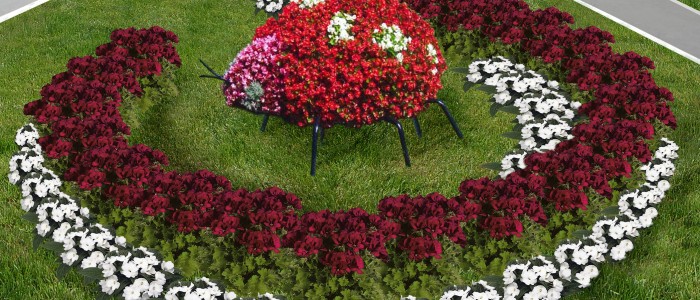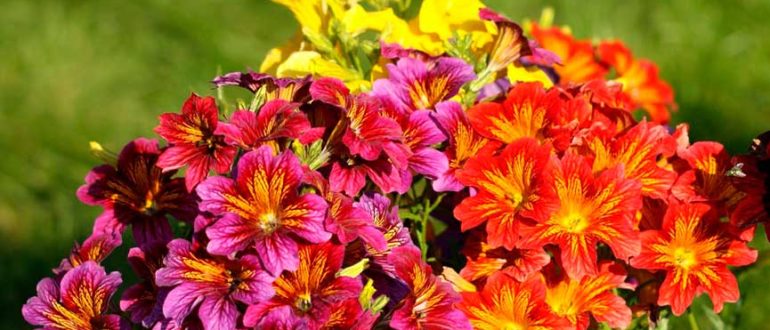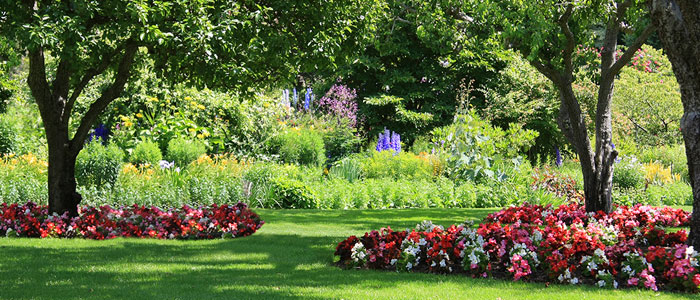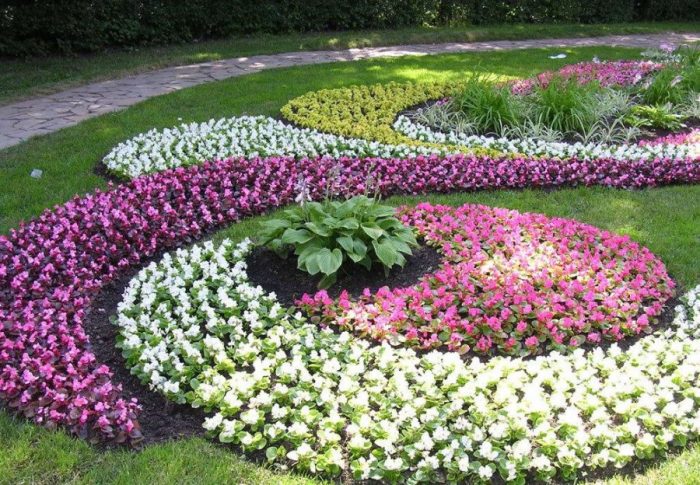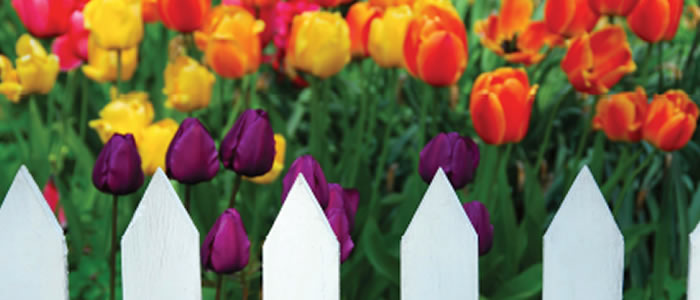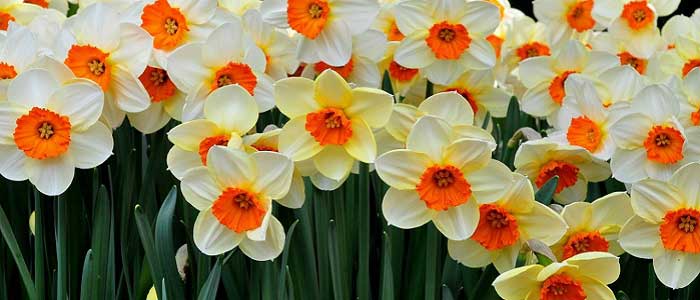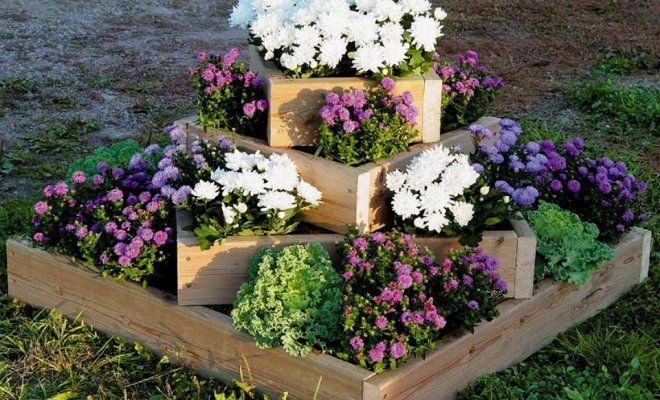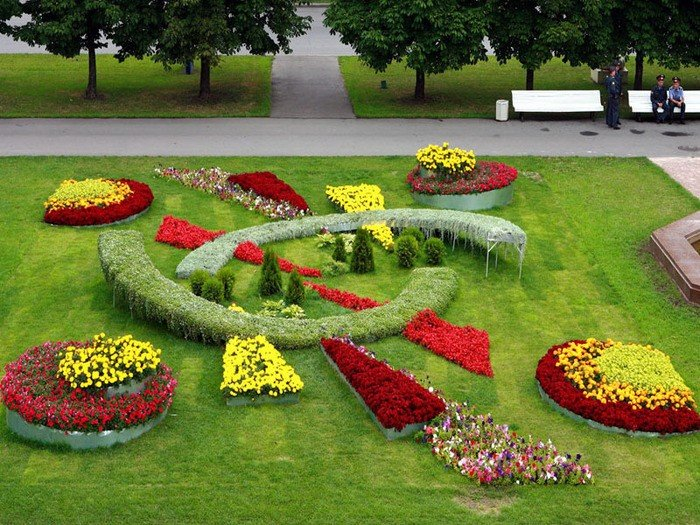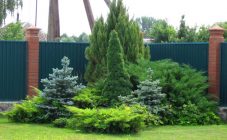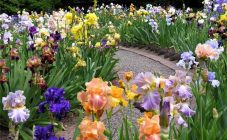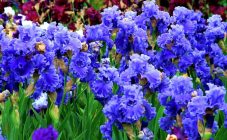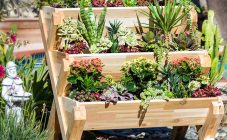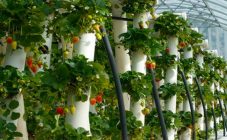Content:
In order to be comfortable in the garden, it must be ennobled. A flower garden of continuous flowering perennials will become a striking element of the landscape. Both a beginner and an experienced gardener will cope with the organization of such a flower bed. The main thing is to understand at least a little the basics of landscape design and know how to care for blooming crops.
The basics of landscape design
Having an understanding of landscape design is necessary in order to create a real work of art from your garden or garden. Landscape architecture is based on several important principles:
- Unity;
- Simplicity;
- Dominant selection;
- Rhythm;
- Geometry and smoothness.
Unity
Unity must be present throughout the territory. This principle is set from the most important object in the garden, namely the house. In what style the residential building is made, this should be followed in the garden. This also applies to flower beds. A constantly blooming flower bed must match the dacha.
If the house is the most ordinary, then it is better to plant meadow plants in a flower garden. Another option in this case is to plant edible crops that look attractive. For example, you can plant ornamental and cauliflower, chocolate mint, lemon balm, curly parsley, etc. They expressively emphasize the peculiarities of the garden.
If the house is brick, built in a strict style, then the flower garden should be formed classic and restrained. For this, the gardener refuses pomp, pretentious brightness and chooses noble calm tones and forms.
Simplicity
This category implies a lack of bombast and emotional overload. Don't overdo it with details. The most attractive and attractive garden areas are organized simply but tastefully. Excessive elements will make the garden untidy.
Dominant selection
Here we are talking about the fact that there cannot be several main elements at once in one territory. Otherwise, they will overshadow each other, and the picture will be blurred. It is important to choose one dominant and build a design taking into account subordination to the main object. The dominant feature can be a pond, a stream, a spreading tree, a bush of an unusual shape, etc. When arranging a flower bed, it is also necessary to determine the dominant plants around which the subordinate crops will be located.
Rhythm
The rhythm of the garden is created by repeating certain motives. An example of a rhythm - in different parts of the garden there are the same dwarf trees, columnar apple trees, standard currants, etc.
Geometry and smoothness
Geometry means creating clear lines in the garden and subordinating vegetation to geometric shapes. For example, berry bushes will be planted in a square shape; paths, playgrounds, fence, hedges will be straight or with sharp angles.
Smoothness is the opposite of geometry in garden architecture. Gardeners who are tired of the clear lines of the city resort to it. Therefore, all objects in the garden area are supposed to be smooth, soft and flexible.
All these principles directly apply to mixborders (combined flower beds).However, you should not strictly follow each of them in order to arrange a mesmerizing composition. These are not rules, but only tips. Each gardener ultimately creates his own unique flower garden from the plants that are his favorites.
Creating a constantly blooming flower bed
Suitable conditions
You should start making a bright flower garden by choosing a place. Experienced designers advise to make a perennial flower bed the dominant feature in a small garden. But do not organize it in an open space, for example, in the very center of the garden. In this case, there is a possibility that the sun will destroy some of the plants. Partial shade is best. Accordingly, it is recommended to plant a flower bed near a gazebo, arch, fence or wall of a house: where there is sometimes a shadow.
Plant selection
A gardener who decides to make a mixborder must correctly approach the choice of perennial flowering plants. This issue directly affects the appearance of the bright corner. Special attention should be paid to three points in selection:
- Flowering time of culture;
- Suitable colors;
- Height.
Flowering time
It is important to choose crops that will bloom in different periods of the warm season, alternately replacing each other. Observing this condition, you can ensure that the flowerbed is constantly in bloom.
Early cultures
Primroses that bloom after the snow melts include saffron, hellebores, chionodox, lungwort, galanthus. A little later, pansies, daisies, primroses, tulips, daffodils bloom. In May, hazel grouses, peonies, as well as a useful plant, whose name is lupine, bloom on the garden bed.
Summer cultures
In the summer, aquilegia, marigolds, hydrangeas, delphinium, yarrow, roses, hibiscus, echinacea, levkoi, lamb, etc. bloom.
Autumn crops
The creation of a flower bed will not do without flowering autumn crops. For example, carnations, begonias, asters, ornamental onions, chrysanthemums, and phlox, which bloom before frost.
Matching colors
The designer's hand knows which plants make up the perfect color combination. An ordinary gardener, when forming a bright corner, should focus on his favorite colors or think about a compositional color scheme. There are several options for palettes:
- ü Choice of contrasting colors. For example, combinations of yellow yarrow with pink armeria and blue bells.
- ü Monochrome compositions. In this case, the bed has one main color. However, different plants produce different shades of the dominant color. For example, if pink is chosen as the main color, then pink peonies, dicentra, primrose, purple asters, carnations, crocus, etc. can be planted on the flower bed.
- ü Choice of crops of cold shades or warm. Bells, cornflowers, gentian, viola, blue hydrangeas are suitable for a cold flower bed. It is recommended to refresh such compositions a little by adding white color.
Height
Dwarfs and undersized
- Armeria seaside;
- Phlox;
- Gentian;
- Thyme;
- Primrose;
- Saxifrage;
- Marigold;
- Saffron;
- Badan, etc.
Medium-sized
- Mylnyanka;
- Garden chamomile;
- Solidago;
- Roses;
- Yarrow;
- Peonies,
- Asters;
- Daylily, etc.
Tall
- Hydrangea;
- Sunflower;
- Juniper;
- Mallows;
- Miscanthus;
- Canna;
- Digitalis purple;
- Buzulnik, etc.
Flower garden planting scheme
There is a basic rule for forming a mixborder planting pattern. It consists in the fact that the smallest plants should be planted in the foreground. Medium-sized - a little deeper. The background includes tall crops. In this case, the ever-flowering abundance will be presented in all its glory. Such a bed of perennials of continuous flowering scheme is justified if the flower bed is located next to some object, for example, near a fence or a garden house.
If you have to develop a territory located in an open space, then the description of the scheme is as follows:
- The first row (about 50 cm) consists of undersized crops. Pinnate cloves, petunia, saffron, marigolds will do.
- The second row (50-70 cm) is formed from medium-sized plants. It is allowed to take perennial sage, yarrow, roses, chamomile.
- The third row (100-150 cm) will be the center one. At the base of the row, a hydrangea is planted, it is framed by ferns, along the edges of the central row, you can plant a purple foxglove.
- The fourth row copies the second row, the fifth row copies the first.
Geometric flower beds
You can make flower beds in the form of geometric shapes:
- Circle;
- Square;
- Rectangle;
- Triangle.
The gardener decides for himself whether to stick to clear edges or make the edges of the flower garden smooth and flexible.
A round flower bed of constant flowering of perennials, the planting scheme may be different. For example, a minimalistic composition with climbing roses will do. The roses on the trellis become the central figure. They are framed by a low juniper, red epimedium. The foreground is decorated with dwarfs: saxifrage, thyme, saffron.
The square fit can be made blue and yellow. To do this, marigolds, forget-me-nots, cinquefoil, Carpathian bell, daylily and irises are planted in the wrong layers.
A rectangular bed will look beautiful if you divide it into three sectors. In the central part of the first sector, a delphinium and snapdragon should be planted. Asters, carnations, petunias, echinacea purpurea are placed nearby. The lower tier consists of large-leaved brunner, erigeron, cinquefoil, gentian. The other two sectors completely copy the first sector.
The flower triangle can be planted with yarrow, cushion aster, garden primrose, forget-me-nots, twig millet, curly parsley, chamomiles. Gardeners can make the spectacular flower of Buddley David the dominant feature of the composition.
Caring for an ever-flowering flower bed
- The mixborder should be watered at least once every 10-15 days.
- The bed is weeded as needed. The procedure is carried out approximately every 15 days. Weeds should not be allowed to grow, not only because of the unkempt appearance of the flower garden - the weed takes from the ground the nutrition that is needed for flowering crops.
- After a heavy downpour, the soil must be carefully loosened with a hoe. Thanks to this work, enough air and moisture will penetrate into the ground.
- Be sure to fertilize plants once a month with mineral dressings. Complex mixtures where potassium and phosphorus predominate are suitable. You should not get carried away with nitrogen. It helps crops grow green mass rather than form flower buds.
- Once a week, the flower bed is inspected and withered and dry flowers and leaves are removed.
A flower bed of continuous flowering perennials will adorn any garden. Especially if you do it while adhering to the basics of landscape design. When forming a mixborder, it is important to know the flowering periods of the selected plants.In this case, you can admire different inflorescences throughout the warm half of the year.
